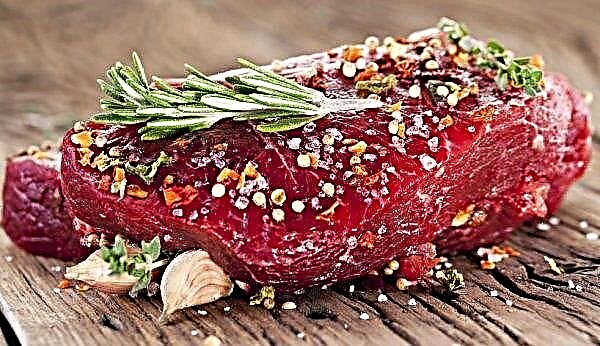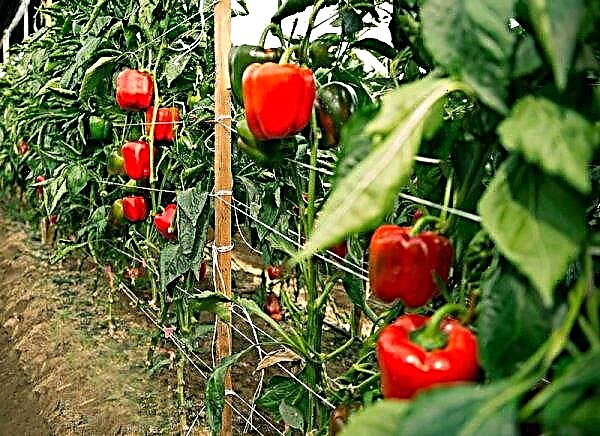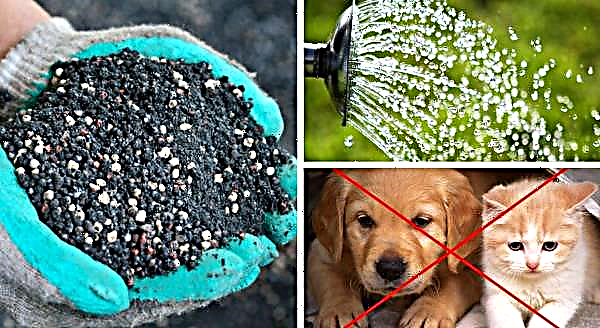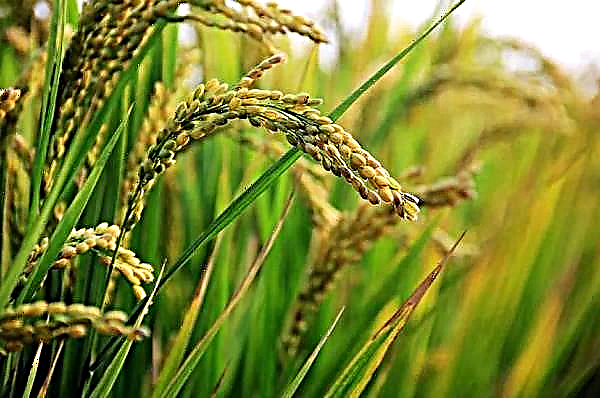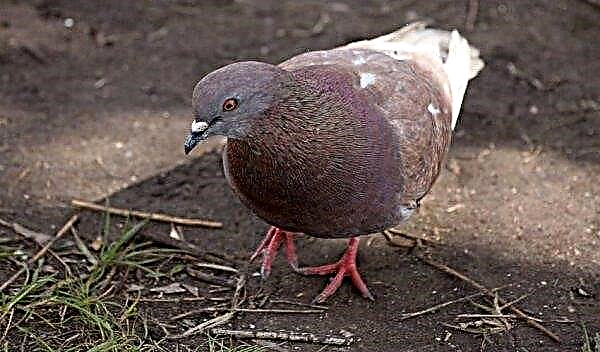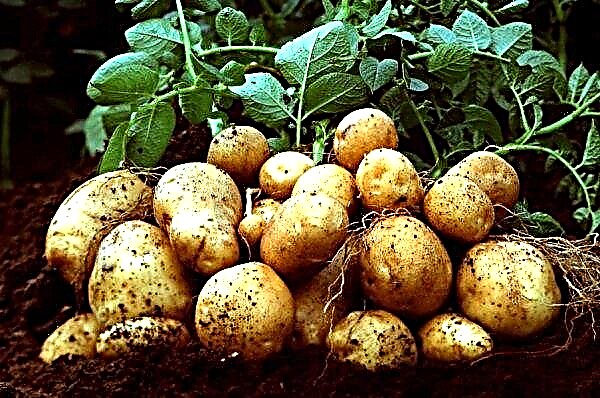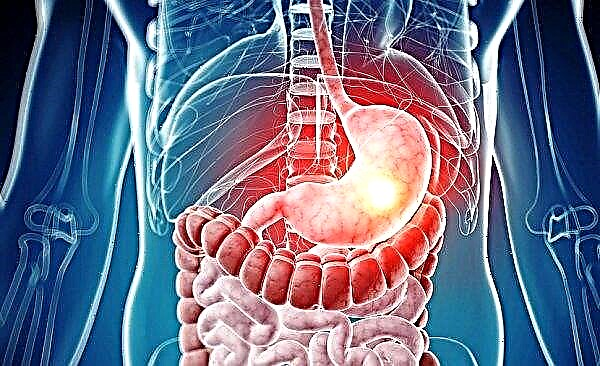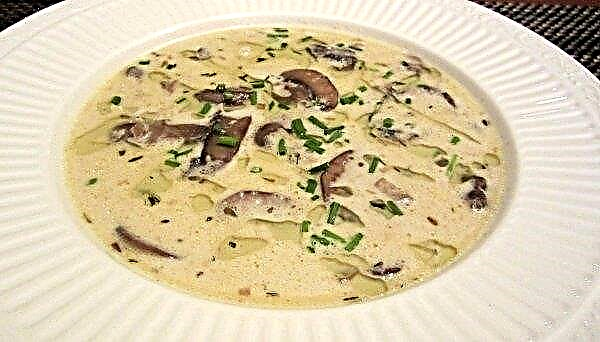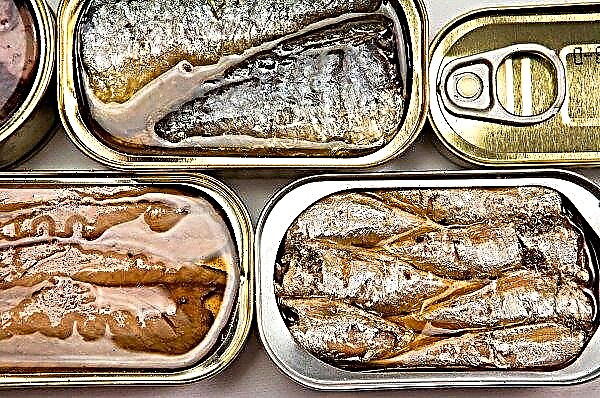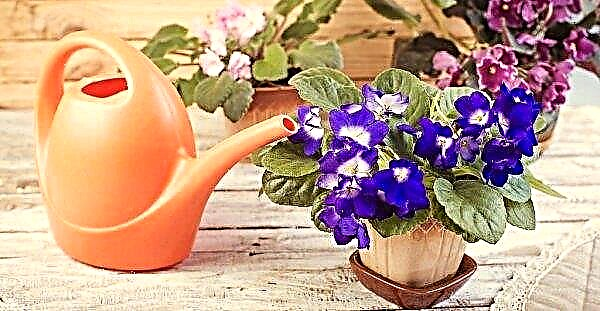Housekeeping always implies the presence of a bird, which not only lays eggs, but also leads offspring. Not every bird can take care of its future cubs by hatching eggs, so incubators are used. This article will tell you how to properly select eggs and raise healthy chickens.
Incubator use
This device recreates the conditions in which an egg would be under a chicken. The incubator will repeat exactly the temperature, humidity and air movements around the egg. All that is required of you is to correctly configure the device and maintain this process until the chicken appears.
Each device has its own characteristics, so there are no complete, unique recommendations on its use. If you are just starting to understand this area and want to purchase a device for hatching, then first you need to understand all the intricacies.
Initially, it is necessary to calculate what the advantages and disadvantages of this method of raising birds are.
Pros
- Among the advantages, the following characteristics of the device can be distinguished:
- low price of an incubator;
- simplicity and ease of use;
- availability;
- ability to breed a large number of chicks;
- minimum participation of the farmer.
Minuses
- There are also negative features, these are:
- electricity costs;
- constant control over the operation of the device.
Did you know? A person hears only the clucking of birds or ordinary clicks, but in fact it is a real language. Experts have identified about 30 different meanings of sounds that chickens and roosters communicate with each other.
How to raise chickens in an incubator
Breeding young animals in an incubator is an artificial process, without which it is sometimes simply impossible to create certain species. We propose to consider the rules and a detailed description of the procedure for giving birth to chickens in an incubator at home.
Each recommendation is binding, because only then can you properly grow healthy chicks.
Incubating chickens: video
Before proceeding to cultivation, familiarize yourself with the preparatory phase.
Preparatory moments
The main task of the farmer will be to create as close as possible conditions for the development of eggs to natural ones. It is important to prepare an incubator with the appropriate temperature, mode and humidity. As for time, that is, when it is better to bring babies out - there is no definite answer.
This lesson can be started at any time of the year. But in order to facilitate your work, it is recommended to start from mid-spring, when the weather is already warm and you do not need to turn on the heating in the room.
Important! Start the incubation in the evening.
Selection and preparation of the incubator
The first home for unborn chickens will be the incubator.
This unit can be divided into:
- industrial;
- farmer;
- for home use.
The latter species is designed for a small number of eggs (up to 100). This equipment is electric, so it has humidity and temperature sensors, voltage stabilizers are available, and in some models the egg turning mechanism is built-in. Today, stores offer various types of equipment, both domestic and foreign, and the question immediately arises of which is the highest quality and most reliable. The device must withstand the incubation mode, and at the same time, errors and breakdowns should not occur with it.
Today, stores offer various types of equipment, both domestic and foreign, and the question immediately arises of which is the highest quality and most reliable. The device must withstand the incubation mode, and at the same time, errors and breakdowns should not occur with it.
Consider the general criteria for choosing an incubator:
- The presence of a temperature controller - they are mechanical and electronic. Electronic ones are vulnerable because they cannot stand sudden changes in voltage in the network.
- Egg rolling - a very convenient mechanism that does all the work itself, but is also not cheap.
- Existence of the high-precision thermostatcontrolling humidity.
- Must be adjustable air vents integrated.
- Walls and covers are better to take removableas this will protect against mixing eggs.
- The incubator body may be of any material.but it’s best to take it from foam, as this material retains heat and is easy to clean.
- Availability of backup power. In case of turning off the light, the device is connected to a 12 V battery.
Mechanical cleaning and disinfection is necessary to prevent the formation of microorganisms such as fungi, bacteria that threaten the life and health of future broods.
This process is carried out as follows:
- Before placing eggs, thoroughly rinse the chamber with warm water, it is necessary to wash off the remnants of feathers from previous broods, if any.
- Clean up other debris with a soft metal brush. Some poultry farmers wash the incubator with laundry soap. It is recommended to use those products that create foam and have molecular attraction, but do not use detergents - their place in the kitchen. If you do not remove all the contaminants, then fungus, bacteria and viruses that contribute to the death of future offspring can be divorced.
- During the processing of the chamber, it is necessary to use disinfectants, the most popular being chloramine. The drug is sold in all pharmacies, it is not used in its pure form. It is worth diluting 10 tablets per liter of water and use a spray bottle.
- Leave the incubator for a couple of hours, then rinse thoroughly with warm water and wipe it dry.
- Dry the apparatus for a day, after which you can begin to check the device.
 It is recommended to carry out a series of temperature control measurements in several places, to check the operation of the flipping mechanism, ventilation. In addition, a couple of days before laying eggs, it is worth turning on the device and checking how it will work all this time, whether there will be shutdowns and malfunctions.
It is recommended to carry out a series of temperature control measurements in several places, to check the operation of the flipping mechanism, ventilation. In addition, a couple of days before laying eggs, it is worth turning on the device and checking how it will work all this time, whether there will be shutdowns and malfunctions.The incubator should be in a warm place with a temperature of about +15 ... + 20 ° С.
Be sure to ventilate the camera in free mode three times a day for 10 minutes.
Did you know? 300 years ago, incubators could only be seen on large poultry farms. Amateur poultry farmers could not afford it, so they made it on their own using boxes with insulation, for example, cloth or simply an old fur coat and lamp.
Egg selection
A good brood can be obtained only from high-quality eggs, so the owner should pay special attention to their selection. The selection process itself begins with the choice of chicken, it should be no older than two years old, without genetic diseases that could be transmitted to offspring.
The appearance of the eggs must be correct, that is, the obligatory presence of an oval and slightly narrowed one of the sides, without any deformation. Elongated and pear-shaped eggs are not suitable - they must be disposed of. The most optimal weight will be 50-60 g, you should not take small ones - weak and sick chickens hatch from them, and too large can be with two yolks. If there is a smell of mold, rot, the smell of alkali and grapes - immediately discard.
Be sure to check the eggs with an ovoscope. Lighting the device, you will need to find the yolk and the air chamber, which is located at the blunt end of the egg. Its size does not exceed a teaspoon. It is worth making sure that the yolk is correctly positioned - it is usually located in the middle or slightly shifted completely. Do not take the egg where the yolk is adjacent to the inside of the shell.
It is worth making sure that the yolk is correctly positioned - it is usually located in the middle or slightly shifted completely. Do not take the egg where the yolk is adjacent to the inside of the shell.
Important! Eggs laid after six in the evening cannot be used. They are less viable than morning ones - it depends on the circadian rhythm and the hormonal background of the laying hen.
Using an ovoscope, you can consider the pathology of the egg, these include:
- spots;
- krasyuk;
- tech;
- additive;
- bloody drips;
- bacterial cuff.
Such eggs must be disposed of; they cannot be eaten.
To find out the sex of future offspring you need:
- Look at the form. If round shapes are observed, a chicken grows inside, the sharp and elongated end speaks of a cockerel.
- Take the egg in your hand so that the sharp end remains at the top and slide your finger across the surface. If it is smooth - there will be a female, and if there are tubercles - a male.
- With an ovoscope, shine on the position of the air chamber. If it is centered on the dull side, there will be a cock, and if it is shifted to one side, wait for the female.
After selection, you can safely go to the bookmark.
Egg laying rules
Eggs are laid in the apparatus heated, so they are brought in advance into a room with a temperature of about +25 ° C for 9-10 hours.
Important! It is forbidden to wet and even wipe with a damp cloth before placing the eggs in the incubator, otherwise you can easily damage the protective film that saves the baby from various viruses and bacteria.
The temperature should not be higher than +27 ° C, otherwise the embryo will not develop properly. To moisten the incubator, water is poured into the pan at a temperature of +40 ... + 42 ° C. They lay eggs in an incubator in the same way as they lie in a nest under a chicken. If they lie horizontally, the embryo pops up and thus receives the maximum amount of heat. The device with automatic flipping allows you to lay eggs even vertically.
They lay eggs in an incubator in the same way as they lie in a nest under a chicken. If they lie horizontally, the embryo pops up and thus receives the maximum amount of heat. The device with automatic flipping allows you to lay eggs even vertically.
Incubation conditions
The development and growth period of the future chicken is 18 days. Temperature is one of the main components that you need to constantly monitor. Humidity plays an equally important role, otherwise, without this component, the embryo would simply adhere to the shell and die.
Conventionally, the process is divided into periods:
| Duration | Temperature | Humidity |
| 1-11 day | +37.9 ° C | 66% |
| 12-7 day | +37.3 ° C | 53% |
| 18-19 day | +37.3 ° C | 47% |
| 20-21 days | +37.0 ° C | 66% |
This table will help the host monitor the incubation process. Pay particular attention to humidity that increases during the last days of the fruit.
Incubation steps
How many main periods exist, it was already highlighted earlier, now we will consider what each is characterized by:
- The initial one lasts 1–8 days. At the very beginning, vital organs are formed, such as the heart, and then the entire cardiovascular system. It is forbidden to open the device while the baby begins to form. Since the chicken is too small, he does not need air - you should not ventilate the device.
- The main period is 8-14 days characterized by the formation of the skeleton and muscles, the beak begins to stand out. These days, the egg flipping frequency increases to 3.5 hours, start to ventilate the device, opening holes in the walls 2 times a day for 6 minutes. To improve air circulation, the heating element is switched off.
- The final 15-18 day. Start to gradually reduce humidity to 45%, the temperature drops to +37.3 ° C. By the tenth day, the eggs should become darker if illuminated with an ovoscope. All internal organs and tissues are finally formed. Humidity rises to 55%, the temperature remains unchanged. Airing lasts about 15 minutes. Turning over is necessary to carry out 6 times a day.
- The period before hatching is 18-21 days. It is characterized by the willingness of the chicken to escape. You will hear the first bites in the shell, and a faint noise is heard inside the chick's house. The temperature drops to +37.0 ° C, airing is done up to 4 times a day. It is impossible to say exactly what day the chicken will hatch. Water is removed from the apparatus as soon as the first chicks appear.
 Following all these rules, chicks are born healthy and strong. After hatching, the newborns dry out, gain strength, then they are placed under the heater. The device itself is cleaned and washed.
Following all these rules, chicks are born healthy and strong. After hatching, the newborns dry out, gain strength, then they are placed under the heater. The device itself is cleaned and washed.Did you know? Most chickens are born with a yellow fluff. This is due to the fact that the feed and grain that they fed on contained natural pigments that color in a yellow tint.
Possible incubation complications
The very first and main problem will be a violation of the temperature regime, which can be of two types - a decrease in temperature or overheating:
- The first type occurs due to a malfunction in the thermostat, a power outage or a decrease in voltage. Therefore, in order to be ready for such an event, you need to install a stabilizer or have a battery as a power source. If, nevertheless, the temperature drops, then immediately cover the camera with hot water warmers, they will be able to warm the eggs for about 2-3 hours until you fix the malfunction. A slight decrease in temperature will not affect young growth. It is important that the temperature does not drop to +35.0 ° C.
- During overheating, the incubator must be immediately cooled by opening the lid and turning off the thermostat. When the thermostat overheats, you will need to replace it with a new one, so that more does not happen. Temperature above +43 ° C will lead to protein folding and, consequently, death of young animals.
Withdrawal care
Proper care must be provided for the young immediately after the incubation period. Chickens need to prepare good conditions for living after the incubator, as well as introduce proper nutrition.
Conditions of detention
Immediately after hatching, you do not need to remove the chickens from the incubator, let them dry and get used to the new world. Usually this process takes about half an hour. After this time, the young animals are transferred to a box about half a meter high, on the floor of which thick cardboard or natural fabric should be laid.
To prevent the chickens from freezing, a heating pad is installed in the middle of the box with a temperature of +39 ° C. If not, you can use an incandescent lamp, which is placed on top.
Chickens should be prepared for life on the street gradually, continue to continue to observe the temperature and lighting. On the first day the light is constantly on, but from the second day it starts to turn off from 9 pm to 6 am, so that the birds gradually get used to the natural habitat.
In this case, the box is covered with a cloth so that the heat does not leave the box. No need to put the box on a cold floor, because then the chicks can catch a cold, because their immunity is still too weak.
Feeding
The main factor for growing healthy and strong young animals and, of course, breeding a productive economy, is quality nutrition from the very first days of their lives.
- Chicks can start a meal already on the first day, for this, millet, crushed barley and grated semolina with yolk are suitable. Giving food is only friable, and water can only be drinking and room temperature.
- On the second day, the diet is replenished with low-fat cottage cheese, ground wheat. Instead of water, the chicks are fed with kefir, diluted with water, in a one to one ratio. They give a finely ground shell, which helps to normalize the digestive system and calcium intake.
- On the third day they give greens, for example, dandelion leaves. To avoid indigestion, chickens need to be fed a yarrow decoction about three times a day.
- On the fourth or fifth day they add special compound feed rich in minerals and substances.
- On the sixth and seventh day they give meat and bone meal and oilcake.
- On the eighth, ninth and tenth day add boiled and grated root crops: carrots, beets, pumpkins, potatoes. The amount of food is increased gradually, depending on the age of the chickens.
Feeding in the first 10 days is done every 2 hours, and then the period is reduced to 5-6 times and in the end result by two months it should be three times.
Did you know? The shell is the protection of the embryo; it has more than 7000 pores that allow air to pass through.
Possible Chick Diseases
Regrettably, the chicks are still too vulnerable and suffer from diseases such as:
- Coccidiosis - Caused by parasites that enter the body along with poor-quality feed or from a dirty feeder. They live in the intestines and cause its upset. Symptoms are: weakness, refusal to eat and diarrhea. Treatment is with pills that destroy coccidia, for example, Avatec, Sacox.
- Colibacillosis - This is an infection that affects only chickens. Its symptoms: lethargy, hoarseness and respiratory failure, lack of appetite. However, the bird drinks a lot of water. In this case, they are treated with antibacterial drugs, for example, enrofloxacin.
- Hypovitaminosis develops with malnutrition, lack or lack of vitamins. The lack of vitamin D causes rickets, which is characterized by curvature and brittle bones. Prevention consists in the necessary calcium supplementation with the addition of fish oil.
- The most common disease are wormsthat enter the body through water and food. These creatures parasitize in the gastrointestinal tract, in the respiratory system and other organs. Symptoms are: decreased appetite, low activity, diarrhea, significant weight loss. You can prevent infection by eliminating contact between chickens and adults. Help in the fight against parasites can only drugs, such as: phenasal go bithionol. This powder is added to chickens food.
 At first glance, it may seem to a beginning farmer that the conclusion of poultry is a difficult task, however, after understanding all the details and recommendations, you can get a good offspring. Growing young animals in an incubator is much easier, weeks under a layer.
At first glance, it may seem to a beginning farmer that the conclusion of poultry is a difficult task, however, after understanding all the details and recommendations, you can get a good offspring. Growing young animals in an incubator is much easier, weeks under a layer.From you it is only necessary to carry out careful control over the unit and subsequently conduct proper care of the hatched chicks.

